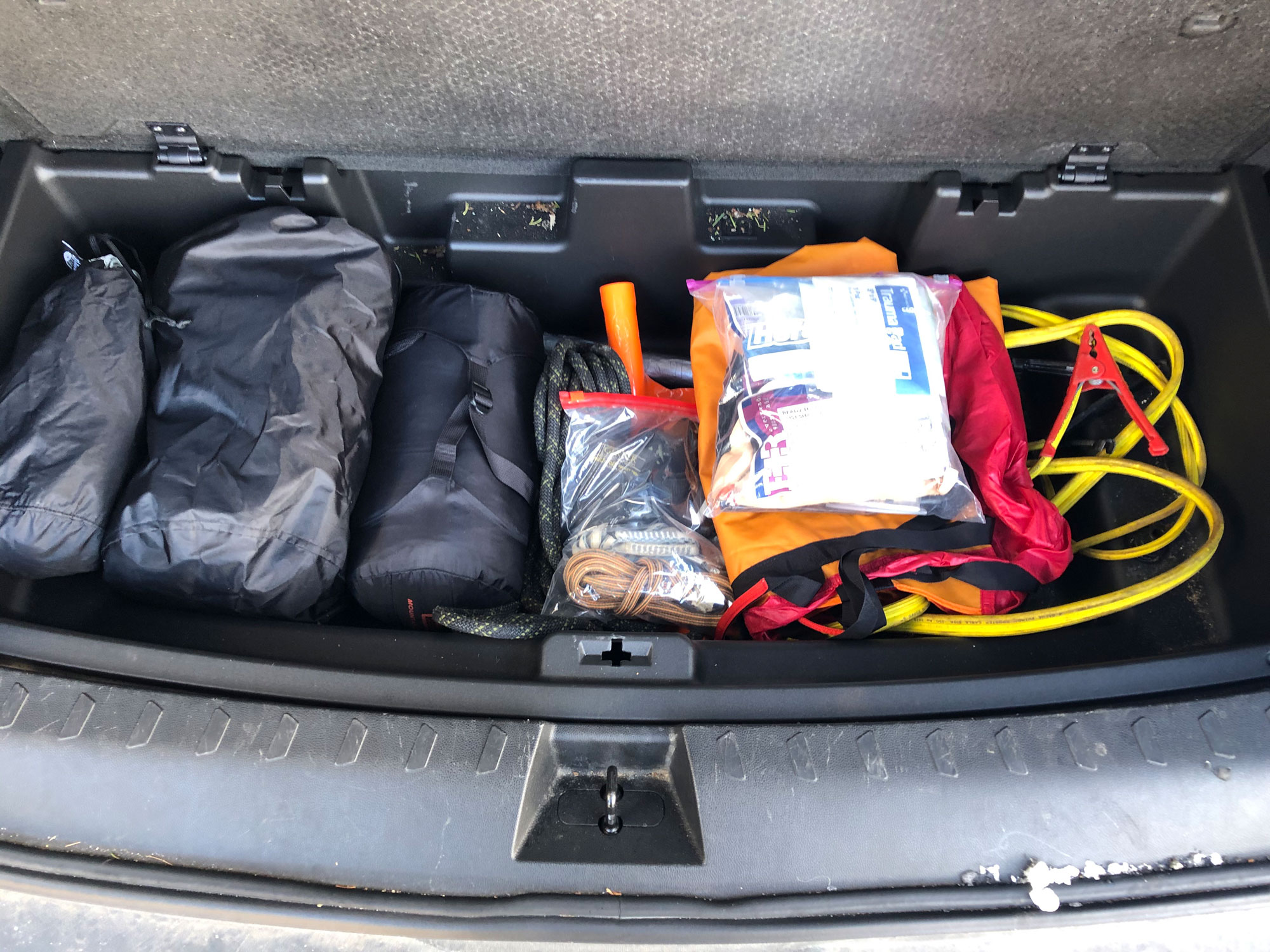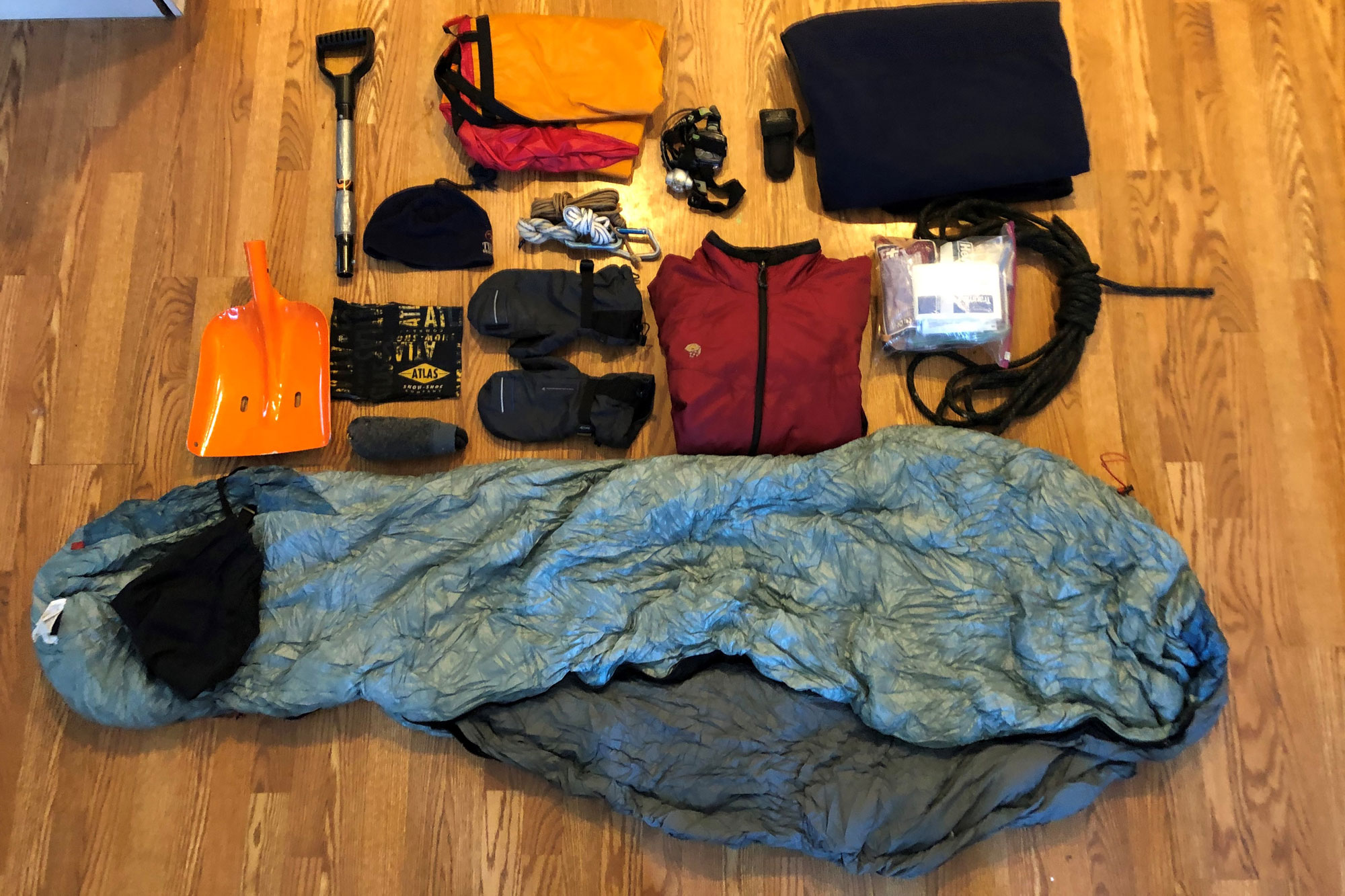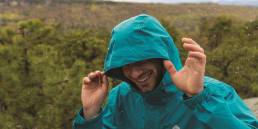Everyone loves to talk about gear—we can fill a long ski tour simply discussing what the right ski width for an East Coast ski is or preaching the benefits of wearing bright clothing. Over the years, however, the gear that has proven the most valuable has also been the least flashy: our “car kit.”

What is a Car Kit?
“Car kit” is the name we’ve given to a handful of essential gear that we keep in our cars when traveling to the mountains. Our car kit includes a variety of items ranging from backup gear to first-aid equipment to rescue kits and have proven to help save everything from days to lives in the mountains and roads. Much like backcountry ski packs and climbing racks, the car kit has evolved over time, with items added and subtracted as experience and knowledge are gained.
Originally, our car kits were self-contained in a few small plastic containers, but they have spread through our vehicles over time. For example, the spare headlamp and sunglasses that are key components of the car kit have proven better-suited to living in the glove compartment.

So, what’s inside?
The foundation of any quality car kit is built on having backups to essential gear, just in case that absent-minded person in your party shows up without it. A key to the car kit is that it’s all spare gear you’re not dependent on, that way it’s there when you need it. A few items that form the foundation of our car kit are:
- Headlamp
- Sunglasses
- Socks
- Mittens
- Winter hat
- Multiclava
- Puffy (An old one kept compressed doesn’t take up much space. Yes, keeping a puffy compressed is bad for it, but we’re sure the person who forgot theirs won’t complain.)
- Multitool (Preferably one with pliers.)
- Hex wrench
- Food (A few energy bars and a couple of gels are great for spring, summer, and fall. For winter, add something less likely to freeze, like trail mix.)
It’s also not a bad idea to adjust your car kit seasonally or add a couple of sport-specific items. For example, carrying a backup set of MICROspikes if you’re a winter hiker, an extra set of goggles if you’re a skier, or a helmet if you’re a biker. Also, add items like hand warmers in the colder months and sunscreen in the summer.
Supplemental First-Aid Kit
Not everybody carries a large, comprehensive first-aid kit into the woods and the car is the perfect place to stash everything you need to complement the contents of the kit in your pack. A car kit is especially useful when recreating close to your car (think sport climbing on the Parking Lot Wall at Rumney or running laps in some Granite Backcountry Alliance glades), and when you’re deeper in the backcountry—where it can take a search and rescue group significantly longer than you think to organize and arrive at a scene of an accident or medical emergency—the car kit may prove a vital supplement. If manpower allows, someone can run back to the car and retrieve the kit to further the process of self-rescue.
Having a supplemental first aid kit in the car is also great for situations where your primary kit accidentally gets left at home or you don’t have your primary kit with you—think witnessing a car accident while commuting to work.
Some key items for the supplemental first-aid kit include:
- Bleeding control (A tourniquet, pressure bandages, gauze pads, roller gauze, tape, extra medical gloves, and a boo-boo kit.)
- Airway management (A light CPR mask and, if you have the training and knowledge, oral and nasal airways.)
- Exposure management (An extra puffy, a sleeping bag, and/or a chemical warming blanket like a Ready Heat II—think a blanket made of chemical hand warmers—are great ways to supplement your efforts to keep an injured party warm.)
- Some basic medications like Advil and antihistamines
- A battery pack for your phone (Getting a call out from the backcountry can be taxing on your phone’s battery, but a portable battery like this one from Goal Zero can help ensure you don’t run out of juice.)
Also keep in mind that you might be evacuating the injured party, especially if help is many hours away. If you’re not already carrying a ski sled (winter), guide tarp, or foldable rescue litter as part of your primary kit, stash one in the car.

Car Gear
Because the trailheads and parking lots we frequent are anywhere from an hour to a few hours from our homes, a tow truck, or cell service, the last bit of our car kit is directly related to our cars. A fair amount of this kit is winter-specific, as the odds of getting stuck or having a car not start are higher at this time of year. Our car gear includes:
- Jumper cables to greatly increase the odds of getting a jumpstart
- Kitty litter or a bag of sand (Vital for gaining traction in icy parking lots)
- Compact shovel (An old avy shovel is ideal for digging a car out of a snowbank or after a storm)
- Candle lantern (This can help save the batteries of your headlamp if you need to overnight in your car.)
- Sleeping bag (That sleeping bag mentioned above serves double duty here, but hopefully you’ll never have to spend a night in your car)
Final Thought
Keep in mind that your car kit should evolve. History has a way of repeating itself, so take the lessons learned on those bad and disappointing days and prepare for them in the future.
Tim Peck and Doug Martland
Tim and Doug met long ago at the Eastern Mountain Sports in Canton, Massachusetts. Bonding over a love of slick Quincy Quarry granite, White Mountain sufferfests, and scheming up adventures while folding tee-shirts, today Tim and Doug collaborate to write about their favorite outdoor activities and occasionally get nostalgic about tee-shirt tables.




